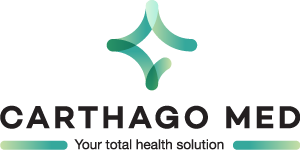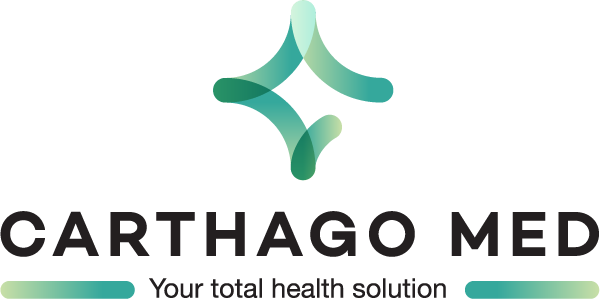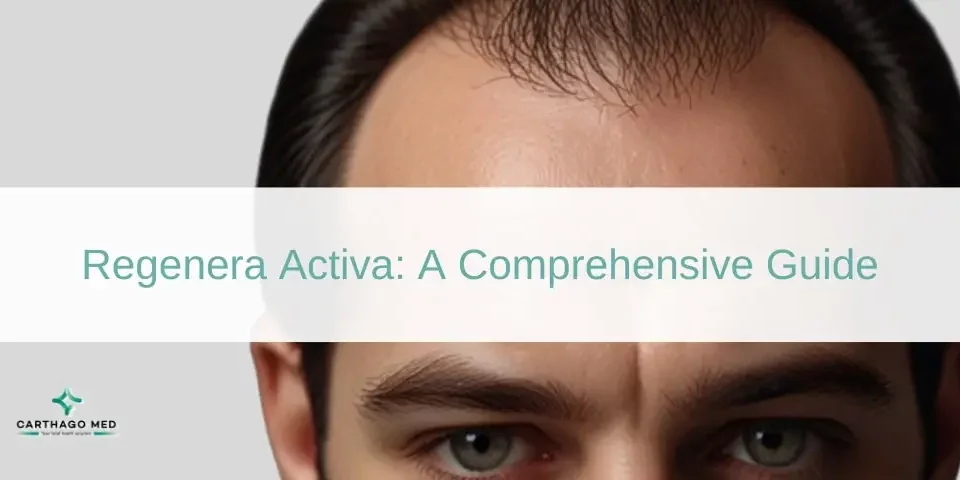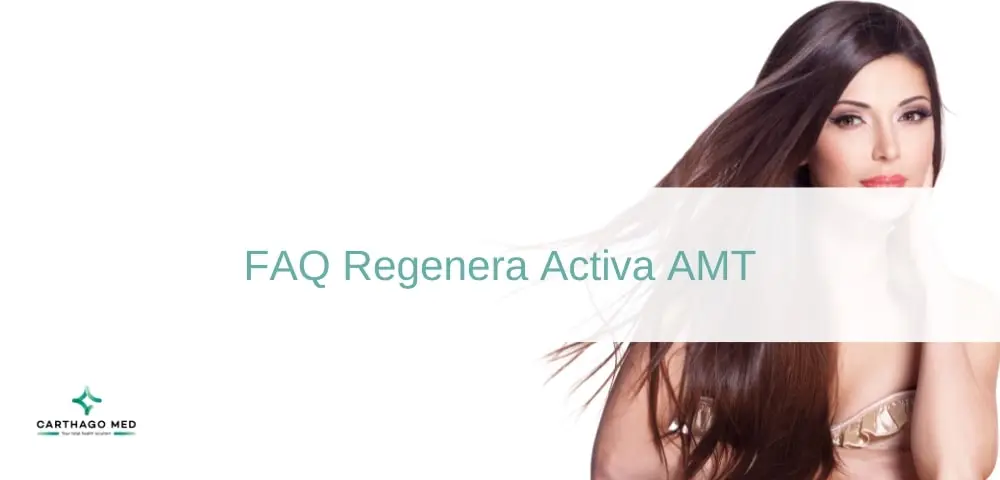
FAQ Regenera Activa AMT
When will I see the results?
When considering Regenera Activa, one of the most common questions patients ask is about the timeline for visible results. This treatment is designed to stimulate hair growth, but it doesn’t happen overnight. Typically, noticeable improvement can be seen within 30 to 60 days post-procedure. Hair growth occurs in cycles, and the newly stimulated follicles need time to start producing visible hair. Patience is essential because the full benefits of the treatment usually manifest after about six months. This period allows the hair to grow, thicken, and become more robust, resulting in a fuller and healthier appearance. Individual response rates can vary due to factors like age, the extent of hair loss, and overall health. Some patients might see quicker results, while others may take a bit longer. It’s important to have realistic expectations and understand that hair growth is a gradual process. Regular follow-up with your specialist can help track progress and make any necessary adjustments to your treatment plan.
What is the long-term procedure result after one year, two years following the procedure?
Regenera Activa offers promising long-term results for those dealing with hair loss. After one year, many patients report significant improvement in hair density and thickness. This is because the treatment not only stimulates new hair growth but also strengthens existing hair follicles, making them less prone to falling out. By the two-year mark, the benefits of Regenera Activa can still be evident. However, maintenance treatments or touch-ups might be necessary to sustain the optimal results. Hair loss is a progressive condition, and ongoing care is often required to keep hair looking its best. Some patients opt for annual or bi-annual sessions to maintain their hair health and continue to enjoy the benefits of the treatment.
Are there cases that do not achieve the desired results?
While Regenera Activa is highly effective for many patients, it is important to acknowledge that not everyone may achieve the desired results. Several factors can influence the outcome, including the extent of hair loss, the underlying causes, and individual biological responses. For instance, patients with extensive hair loss or those whose hair loss is due to medical conditions like alopecia areata or scarring alopecia may have different results compared to those with androgenetic alopecia. A thorough consultation with a specialist is crucial to set realistic expectations. The specialist can evaluate your specific condition, discuss potential outcomes, and determine if Regenera Activa is the right treatment for you. In some cases, combining this treatment with other therapies might be recommended to enhance results.
Does AMT® work for all kinds of alopecia?
AMT® (Autologous Micrografting Technology), utilized in Regenera Activa, is particularly effective for androgenetic alopecia (AGA), the most common form of hair loss. This condition, characterized by progressive thinning of the hair, responds well to the regenerative capabilities of AMT®. The micrografts stimulate the hair follicles and promote healthier hair growth. However, the efficacy of AMT® can vary for other types of alopecia. For instance, patients with alopecia areata, an autoimmune disorder, or scarring alopecia, where the hair follicles are permanently damaged, may not experience the same level of success. It is essential to have a detailed diagnosis and discuss with a healthcare provider to determine if AMT® is suitable for your specific type of alopecia.
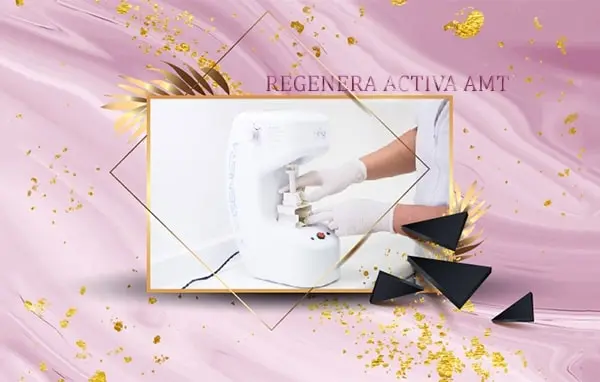
Are there any risks regarding the procedure?
Regenera Activa is generally considered safe and involves minimal risks. Since the procedure uses the patient’s own tissue, the risk of allergic reactions or rejection is extremely low. This autologous approach ensures compatibility and reduces the likelihood of adverse reactions. However, like any medical procedure, there are potential side effects. These can include temporary redness, swelling, or discomfort at the injection site. These symptoms usually resolve within a few days and can be managed with appropriate post-procedure care. Serious complications are rare but should be discussed with a healthcare provider before undergoing the treatment.
How long does the procedure take for recovery?
Recovery time for Regenera Activa is typically short. Most patients can resume normal activities immediately after the procedure. This quick recovery is one of the significant advantages of this treatment. The minimally invasive nature of the procedure means that there is little to no downtime. Mild swelling or redness at the injection sites is common and usually resolves within a few days. Following post-procedure care instructions, such as avoiding strenuous activities and keeping the scalp clean, can further minimize downtime and promote faster recovery. Patients are often pleased with how quickly they can return to their daily routines without significant interruption.
How long does the procedure take and how long do the results last?
The Regenera Activa procedure itself is relatively quick, usually taking about 60 to 90 minutes. This includes the time needed for tissue extraction, processing, and re-injection. Despite its short duration, the procedure packs a powerful punch in terms of results. The longevity of the results can vary, but many patients enjoy the benefits for up to two years. The results’ duration depends on individual factors such as the rate of hair loss, age, and overall scalp health. Many patients opt for annual maintenance treatments to sustain the optimal hair density and health achieved by the initial procedure.
How is AMT® different to a PRP treatment?
AMT® (Autologous Micrografting Technology) and PRP (Platelet-Rich Plasma) treatments are both popular options for hair restoration, but they differ significantly in their approach and results. Regenera Activa uses micrografts from the patient’s own tissue, which includes stem cells and growth factors that stimulate hair growth more effectively. This method targets hair follicles directly and promotes robust hair regeneration. On the other hand, PRP treatment involves drawing the patient’s blood, processing it to concentrate the platelets, and then injecting the platelet-rich plasma back into the scalp. While PRP can also stimulate hair growth, it primarily relies on the growth factors present in the plasma. AMT® typically yields faster and more robust results due to the presence of stem cells and other regenerative components in the micrografts.
What is the difference with a hair transplant procedure?
Regenera Activa differs significantly from traditional hair transplant procedures. Hair transplants involve harvesting large sections of the scalp or individual hair follicles from one area and implanting them into the areas experiencing hair loss. This can be invasive, requires longer recovery times, and may involve more significant discomfort and potential complications. In contrast, Regenera Activa uses micrografts to stimulate existing hair follicles without the need for extensive surgical procedures. This makes it a less traumatic option with a quicker recovery time. It is ideal for patients in the earlier stages of hair loss or those looking for a less invasive alternative to traditional hair transplants. For advanced stages requiring significant volume restoration, hair transplants might still be necessary, but Regenera Activa can complement these procedures.
So, can AMT® benefit a hair transplant patient?
Yes, Regenera Activa can significantly benefit hair transplant patients. It can enhance the health of transplanted hair follicles and improve the overall condition of the scalp. By stimulating the surrounding follicles and enhancing blood supply, Regenera Activa can support better transplant results and faster recovery. Many patients use Regenera Activa post-transplant to boost recovery and stimulate further growth. This combination can lead to a more natural and fuller appearance, maximizing the overall success of the hair restoration efforts. Discussing this option with a specialist can help integrate both treatments effectively.
MOA
The Mechanism of Action (MoA) for Regenera Activa involves harvesting micrografts from the patient’s scalp, which are then processed to isolate regenerative cells. These cells are rich in growth factors and stem cells that promote hair growth. Once re-injected into the areas affected by hair loss, these cells stimulate the dormant follicles, enhance blood supply, and create a healthier environment for hair growth. This targeted approach ensures that the treatment focuses on the areas that need the most attention, leading to effective and noticeable results. The use of the patient’s own tissue minimizes the risk of adverse reactions and enhances the overall efficacy of the treatment.
What AGA stages are eligible for an AMT® procedure?
Regenera Activa is most effective for early to moderate stages of androgenetic alopecia (AGA). Patients in stages I to III on the Hamilton-Norwood scale typically see the best results. These stages are characterized by thinning hair and receding hairlines but still have a significant number of active hair follicles that can respond to the treatment. For patients in more advanced stages of AGA, combining Regenera Activa with other treatments, such as hair transplants, might be necessary to achieve the desired outcomes. The treatment’s effectiveness can be enhanced when used as part of a comprehensive hair restoration plan tailored to the patient’s specific needs.
What can you combine an AMT® procedure with?
To maximize the benefits of Regenera Activa, it can be combined with other treatments such as PRP (Platelet-Rich Plasma), low-level laser therapy (LLLT), and topical minoxidil. These complementary treatments can enhance overall efficacy and promote optimal hair health. For example, PRP can provide additional growth factors to support hair regeneration, while LLLT can improve blood circulation to the scalp. Topical minoxidil can help maintain hair growth between Regenera Activa sessions. Consulting with a specialist can help determine the best combination of therapies to achieve the best possible results for each patient.
Regenera Activa represents a breakthrough in hair restoration, offering a minimally invasive option with significant potential for those struggling with hair loss. By understanding the procedure, potential outcomes, and complementary treatments, patients can make informed decisions to achieve their hair restoration goals.







